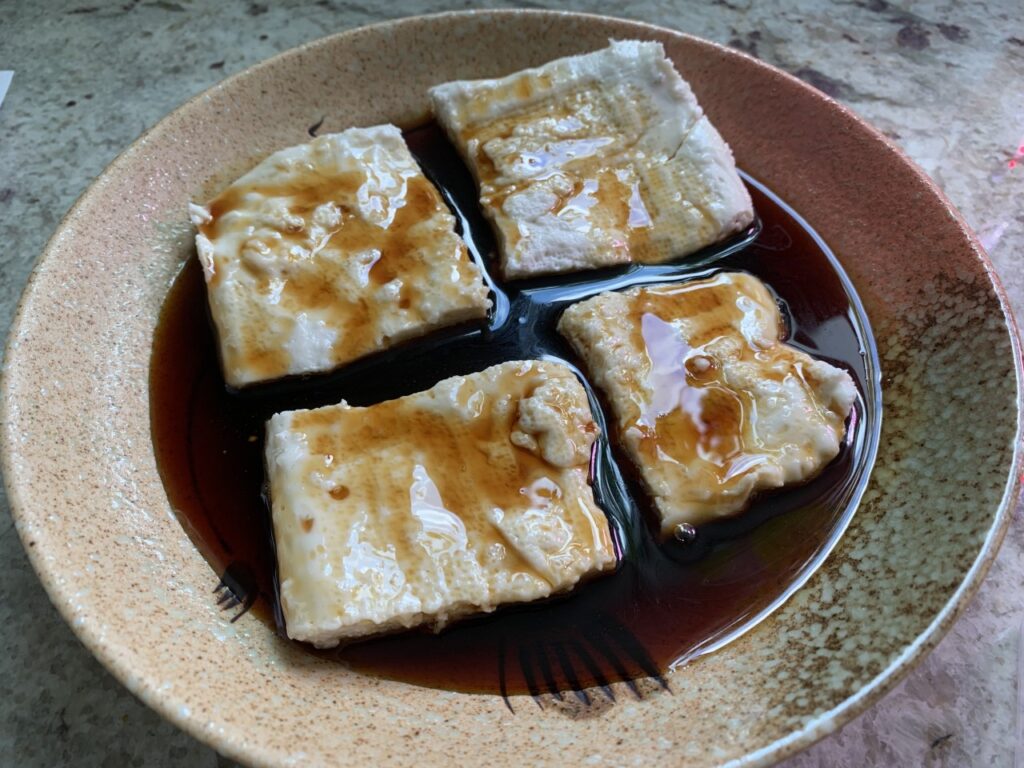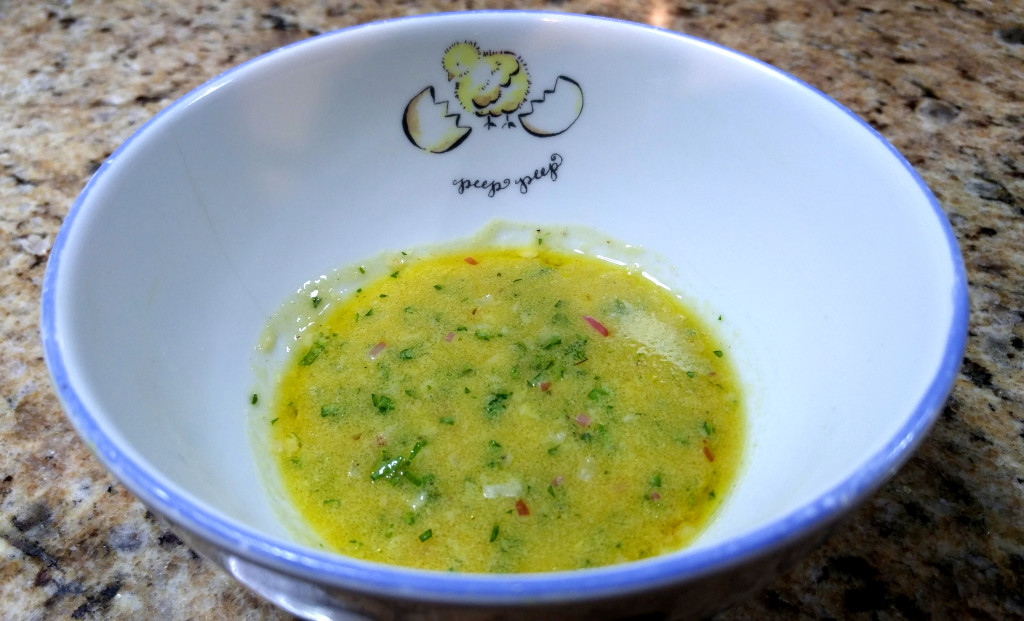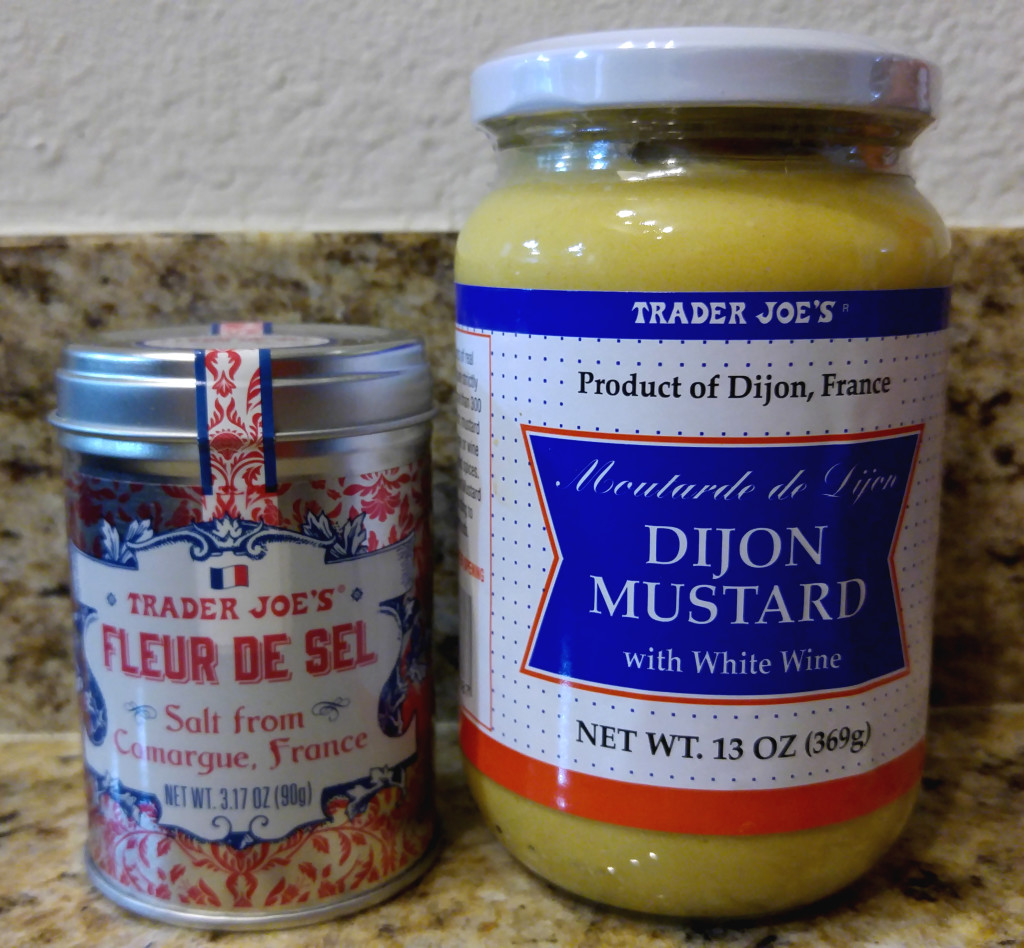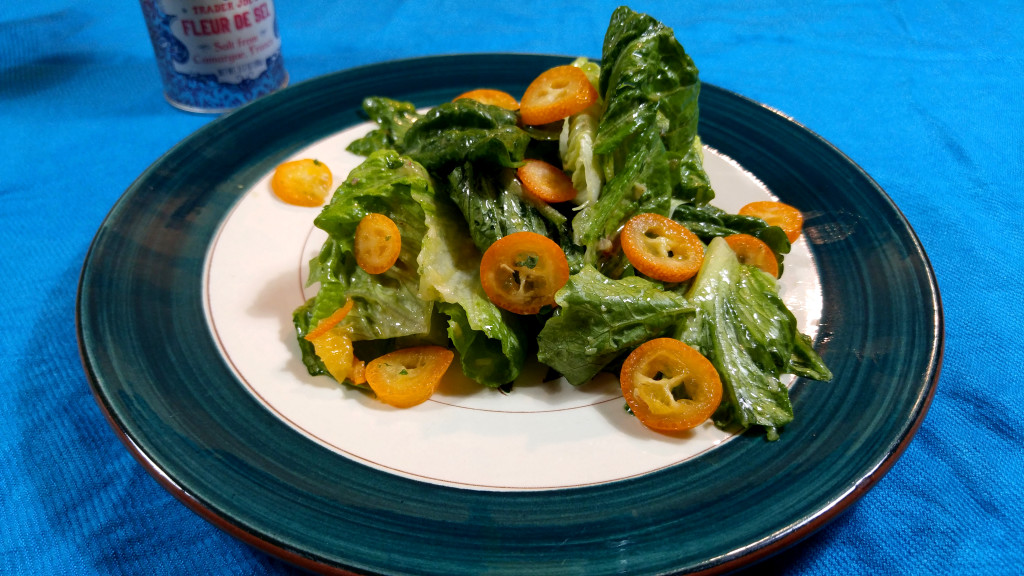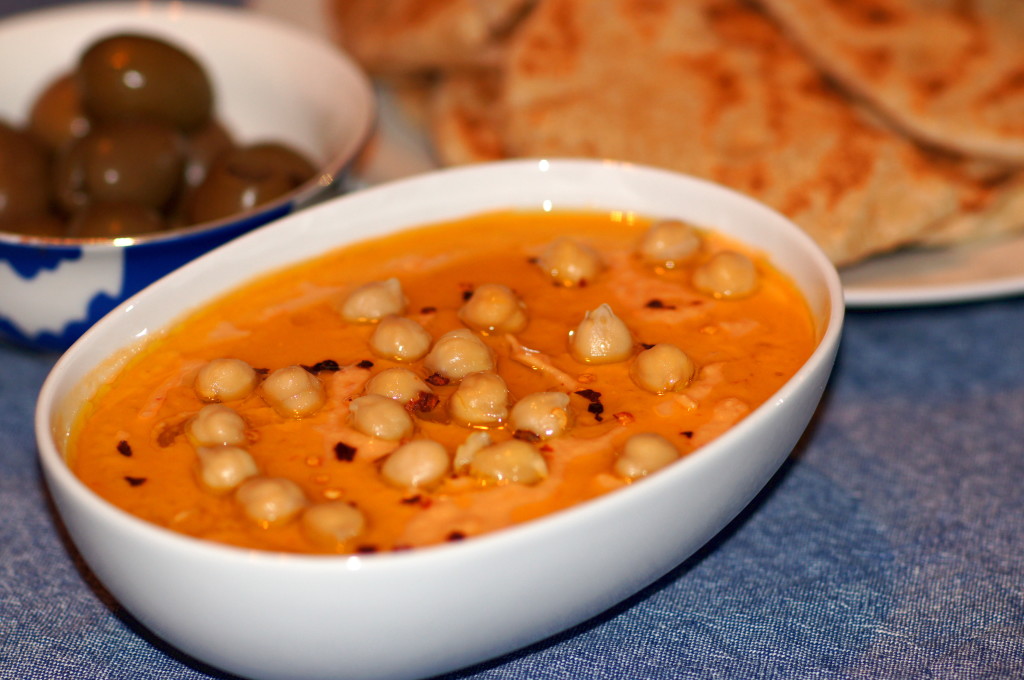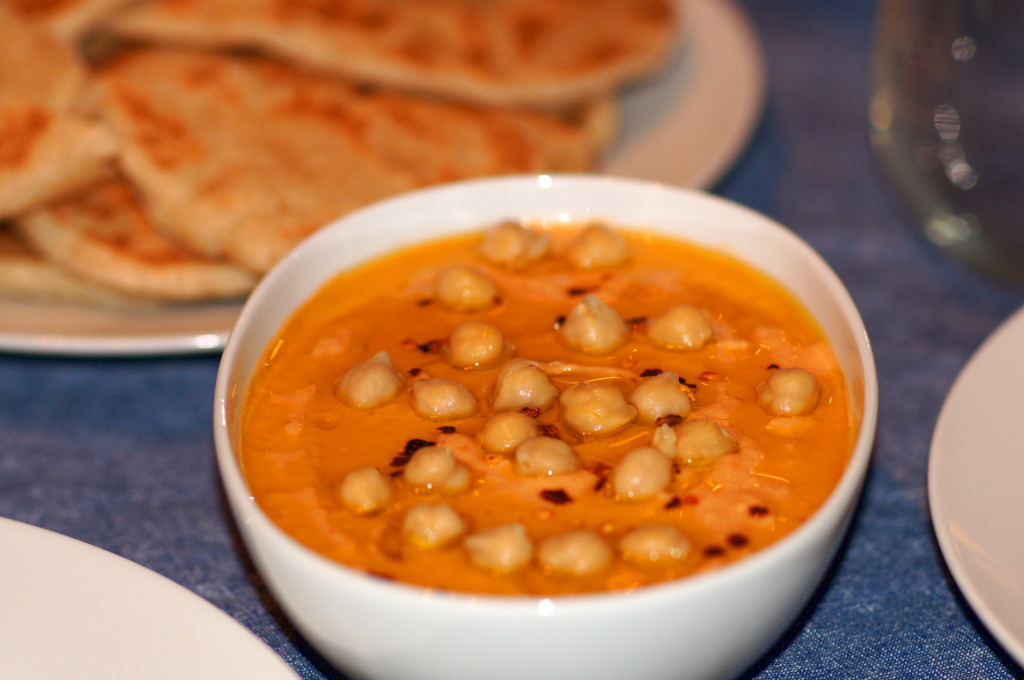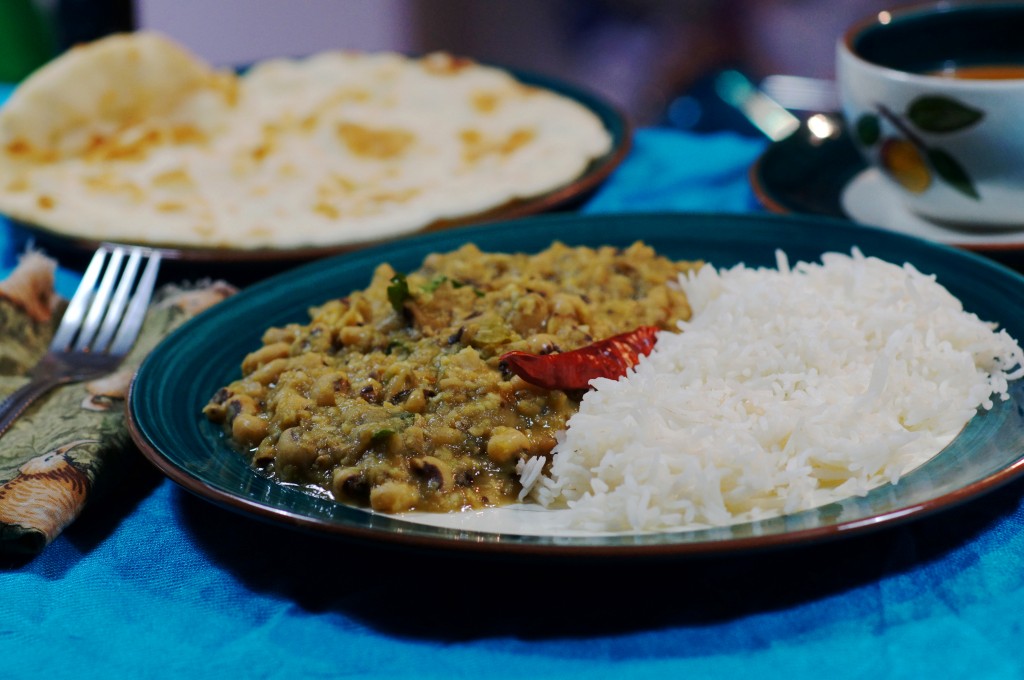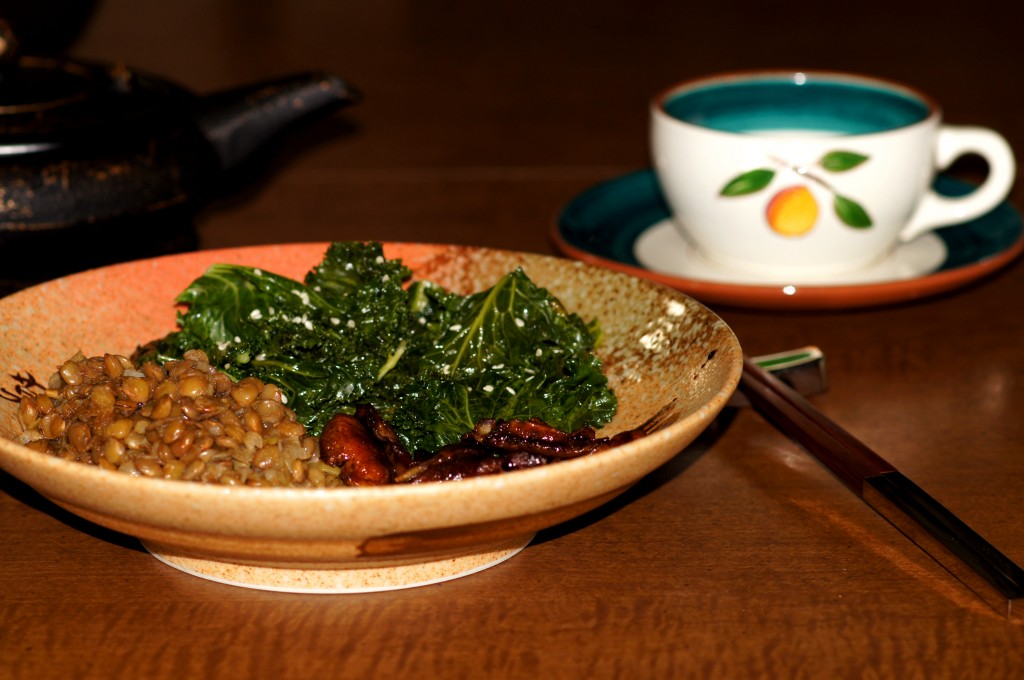
Canal House Lentils, Teriyaki Shiitake Mushrooms, and Kale with Sesame Oil
Corey wanted us to try incorporating three days of vegetarian meals into our weekly diet in an effort to eat healthier and be more environmentally conscious (fruits and vegetables produce more calories per unit of energy expended in the production thereof). This hasn’t been nearly as challenging as I expected. There are so many flavorful vegetarian dishes out there, and I’m enjoying experimenting with new recipes and styles of cooking!
One of our favorite vegetarian meals—Canal House lentils, teriyaki shiitake mushrooms, and kale with sesame oil—was in the January 2014 issue of Bon Appétit (the same issue that featured this wonderfully spicy pork and mustard green soup). Most cooking magazines’ January releases feature healthy, low-calorie food to cater to those making diet-related New Year’s resolutions.
I often look at these issues askance. This isn’t because I dislike healthy cooking, but rather because I believe that taste should come first, and all too often it seems that these recipes sacrifice flavor for health. However, Bon Appétit got it right with this issue: the dishes pack in the flavor while remaining healthy and nutritious.
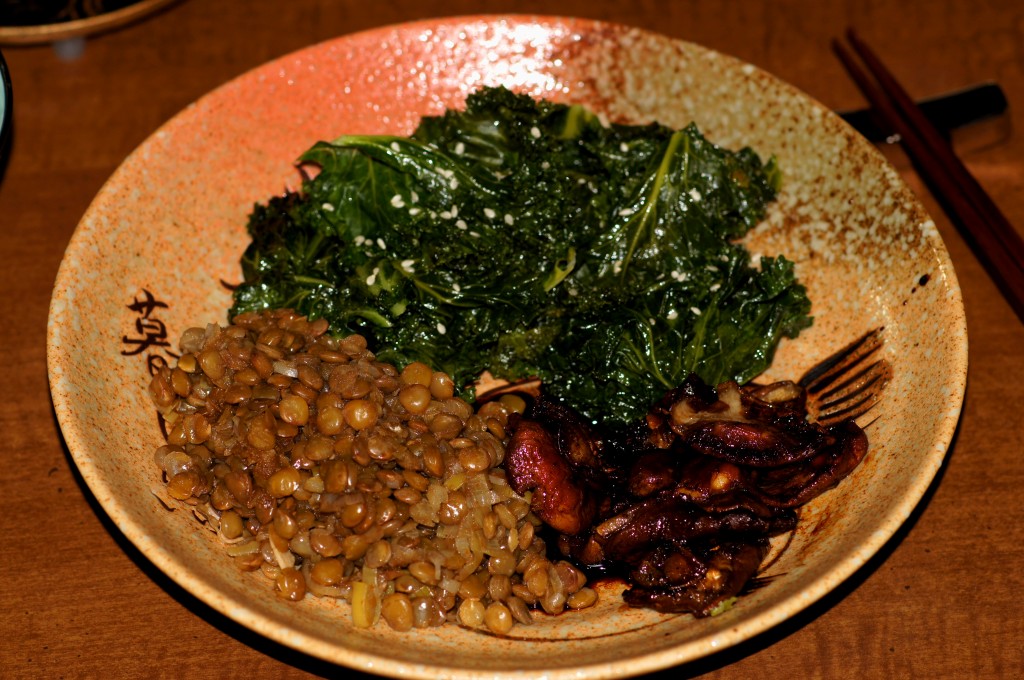
Canal House lentils, teriyaki shiitake mushrooms, and kale with sesame oil is an Asian-fusion meal drawing inspiration from Japanese breakfasts, which tend to be savory and satisfying. I typically cook this meal for dinner, but I do sometimes eat the leftovers for breakfast; it’s so tasty, why not?
The lentils’ flavor comes from sautéed garlic and leek, tomato paste, and soy sauce. The tomato paste adds richness to the dish, while the soy sauce adds saltiness to the earthy lentils. The teriyaki mushrooms are made with shiitakes—my favorite kind of mushroom. They’re gently cooked over medium heat until tender, then tossed in teriyaki sauce. This results in deliciously sweet and savory mushrooms.
The kale is very simple to prepare. Just combine olive oil and sesame oil in a large wok or skillet over medium heat. Then add the prepared kale; season with salt and pepper. Lower the heat, cover, and cook for 7-10 minutes. The kale will be tender but will still retain some of its lovely texture. Kale is a nutritional powerhouse, with tons of vitamins and minerals, so it’s a great green to cook with. I can’t get enough of kale these days! You can also put it in soups, make it into chips, or simply sauté it.
All the components of this meal complement each other very nicely: the soft, sweet mushrooms with the earthy lentils and the slightly bitter kale with sesame oil. I usually serve this meal with a side of white rice (feel free to substitute brown or yellow rice if preferred) so that it will offer complete protein. Canal House lentils, teriyaki shiitake mushrooms, and kale with sesame oil is easy to prepare, healthy, and most importantly, tasty!
If you’re looking for other yummy but healthy vegetarian options, check out this Korean mixed rice bowl with bean sprouts or this kimchi fried rice.
If you enjoyed reading this post, like my Facebook page and subscribe to my blog. That way, you’ll never miss a post!
